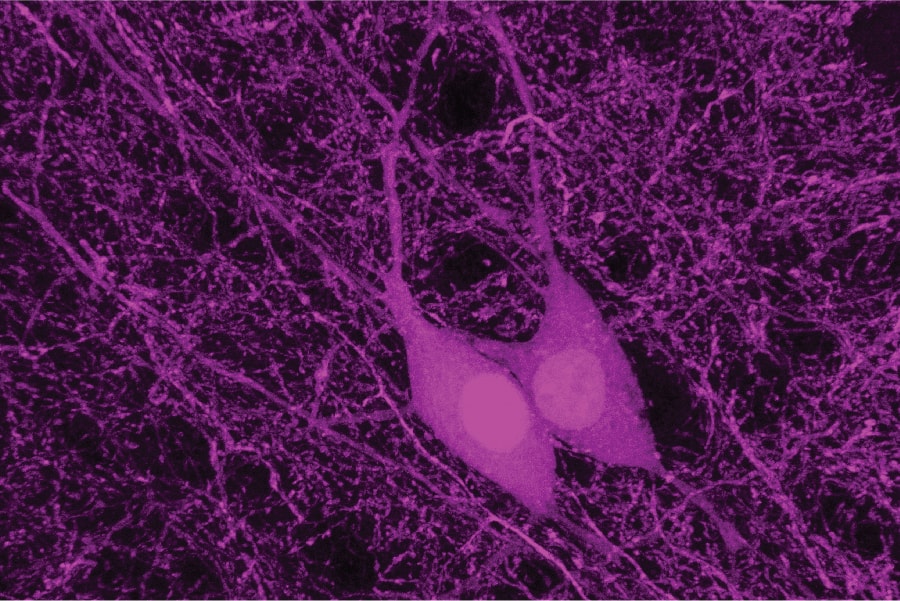
Acetylcholine Wakes Silent Neural Network by Targeting Nicotine Receptors
Neuroscientists at Carnegie Mellon University have, for the first time, used acetylcholine to functionally rewire a dense matrix of neurons in the brain's cerebral cortex. Using optogenetics, they found that the chemical released by nerve cells to send signals to other cells, also known as a neurotransmitter, can turn on the normally silent network by binding to the same receptors targeted by nicotine. Their research is published in Neuron.
"Acetylcholine is known to play a role in a variety of brain states including memory, cognition and attention. Interestingly, nicotine is also known to affect these same brain states," said Alison Barth, professor of biological sciences in the Mellon College of Science, and a member of the joint CMU/University of Pittsburgh Center for the Neural Basis of Cognition. "Nicotine receptors didn't evolve in us so that we would enjoy smoking. They are present in the brain for specific functions. Our study shows that there may be a different way to activate the nicotinic receptors in a way that may enhance things like perception and learning."
In the cerebral cortex there are billions of neurons, divided into a rainbow of different types of cells. Prevalent among these cells are excitatory and inhibitory neurons called pyramidal and somatostatin neurons that are highly likely to form synapses and connect with one another, creating a dense web of connections. This web, however, is strangely silent.
"It's weird that these connections are so ubiquitous, but rarely used," Barth said. "The brain wouldn't waste energy making them if they didn't have some type of purpose."
Barth, Carnegie Mellon researcher Joanna Urban-Cieko and colleagues decided to find out what could turn on these synapses. Over the course of a year, they screened nearly a dozen different drugs until they found out that acetylcholine, in the form of carbachol, caused the synapses to fire.
The researchers then used optogenetics to determine if natural release of the brain's own acetylcholine had the same effect. They found that causing an acetylcholine-releasing neuron to fire only one or twice had the same effect as bathing the brain in pharmaceutical acetylcholine for 30 minutes.
"The precision of this effect shows that the brain is specifically wired to use acetylcholine to influence these specific connections," Barth said.
They also discovered that while the drug's effects were promiscuous, activating two types of receptors that bind to acetylcholine, nicotinic and muscarinic receptors, the endogenous release of acetylcholine only activated the nicotinic receptors. This is the first experimental evidence that the two receptors can be activated independently by the brain's own circuitry.
The researchers plan to continue to study the role acetylcholine plays in activating neuronal networks in the cerebral cortex in order to determine how it impacts neural plasticity, sensory processing and cognition.
This research was funded by the McKnight Foundation, the National Institutes of Health (NS088958), the National Science Centre, Poland, the European Research Council, the DFG, the Berlin Institute of Health and the European Union.
Additional study authors include Carnegie Mellon doctoral student Stephanie Myal, and Jean-Sebastien Jouhanneau and James F.A. Poulet from the Max Delbrück Center for Molecular Medicine and Charité-Universitätsmedzin Berlin.